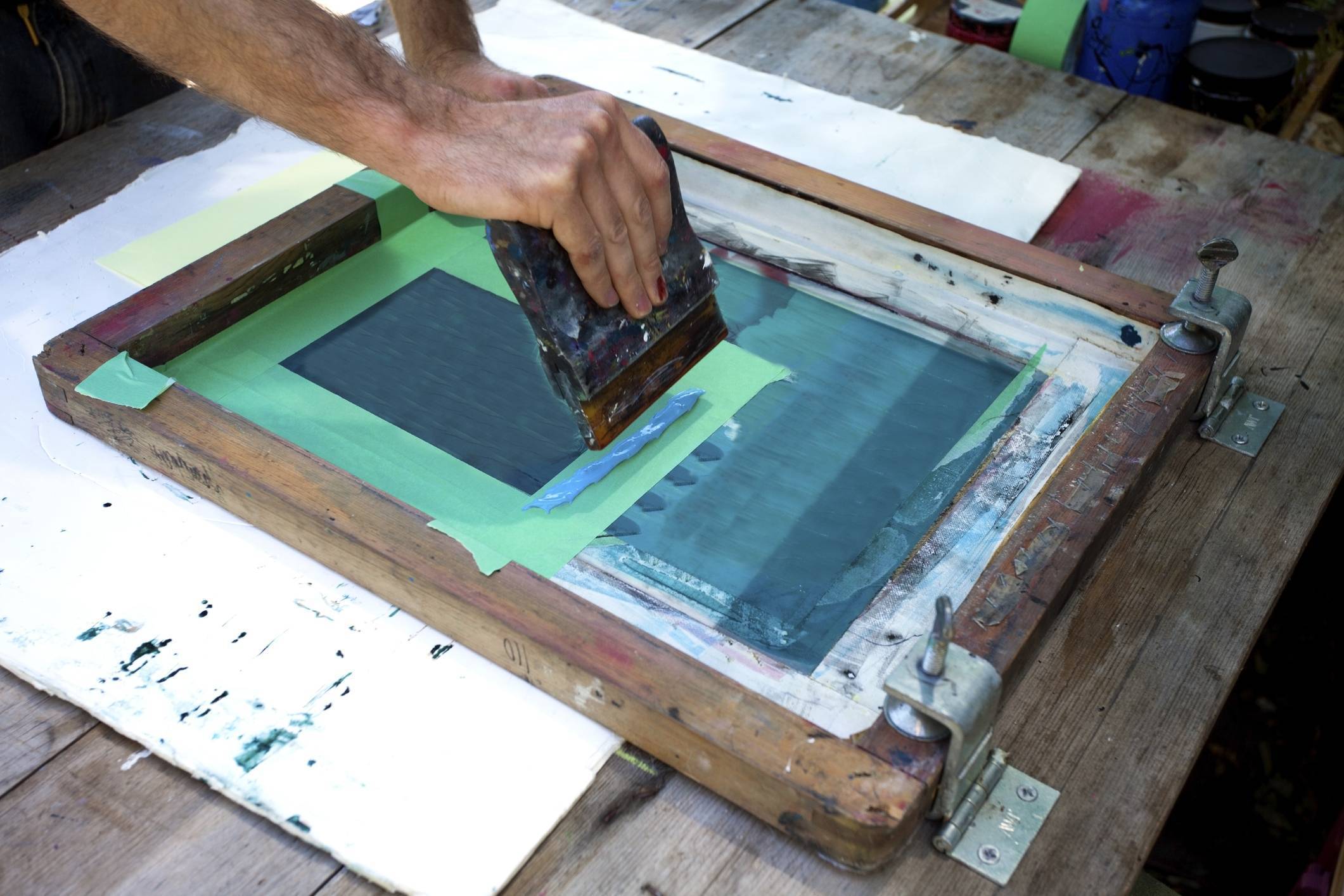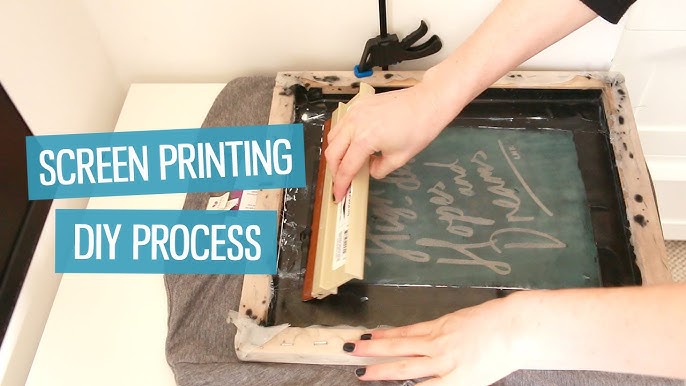ChatGPT said: Finding the best deals with 10:9 Design near me: strategies
Discover the Various Types of Screen Printing Techniques for Your Next Project
Screen printing provides a diverse variety of methods that can enhance any innovative job. From standard techniques like serigraphy to contemporary technologies such as direct-to-garment printing, each approach has its unique benefits. Specialized alternatives, consisting of metal and green inks, introduce much more possibilities. Recognizing these strategies can considerably impact the last result. Nevertheless, the challenge lies in picking the most suitable approach for certain requirements and desired results. What aspects should one take into consideration?

The Fundamentals of Screen Printing
Screen printing might seem facility, it is fundamentally a simple procedure that involves transferring ink via a mesh screen onto various surfaces. The method begins with the development of a pattern, which defines the design to be printed. This pattern is affixed to a mesh screen, normally constructed from polyester or nylon. Once the stencil is in location, ink is related to the screen and pressed via the mesh using a squeegee, leading to the preferred pattern being published on the underlying product.
Screen printing can be performed on a wide variety of substrates, including material, paper, and plastic, making it a versatile selection for various jobs. The process enables complex styles and vibrant colors, making it popular in markets such as fashion, art, and advertising and marketing. Comprehending these fundamentals equips people with the foundational understanding called for to explore advanced strategies in screen printing.
Standard Screen Printing Techniques
Standard screen printing methods have been employed for centuries, preserving the craftsmanship and creativity of this approach. This approach uses a mesh screen to move ink onto a substrate, such as material or paper, permitting lasting and lively layouts. The process begins with developing a stencil, which blocks specific locations of the screen to control where the ink will certainly be used.
One popular method is serigraphy, usually made use of for imaginative prints and minimal versions. One more is the use of water-based inks, which are environment-friendly and supply a soft feel on textiles - 10:9 Design LLC Company. Additionally, traditional approaches can consist of hands-on printing, where artisans apply ink with a squeegee, guaranteeing precision and attention to information
These methods stay valued in the industry for their responsive high quality and the distinct textures they generate, attracting both creators and customers that appreciate the heritage of screen printing.
Digital Screen Printing Innovations
As the need for faster production and personalization in the printing industry has actually surged, electronic screen printing developments have arised as a game-changer. This modern technology mixes conventional screen printing approaches with electronic processes, permitting for fast prototyping and intricate layouts that were previously hard to achieve. One substantial development is the intro of direct-to-garment (DTG) printing, which helps with high-quality, full-color prints on numerous textiles without the requirement for displays. Additionally, innovations in ink formulations have actually brought about environment-friendly options that preserve vivid colors while lessening environmental effect. Using automated systems even more simplifies production, decreasing labor prices and enhancing precision. These technologies not only accommodate tiny set orders and customized styles yet also enable quicker turn-around times, making them excellent for companies concentrated on conference customer demands in a hectic market. Digital screen printing, as a result, stands for an essential development in the domain of printing methods.
Specialized Screen Printing Approaches
Discovering specialty screen printing methods exposes a varied array of techniques that push the limits of creative thinking and functionality in the printing market. Amongst these, glow-in-the-dark inks give an unique visual impact, making styles come to life in low-light problems. Metal inks, recognized for their shimmering finish, include a touch of deluxe to published products. An additional cutting-edge approach is discharge printing, which gets rid of color from the textile instead of adding ink, resulting in a soft, vintage feel. High-density printing creates a raised appearance on the surface area, boosting tactile engagement. Additionally, water-based inks are gaining appeal for their lively colors and decreased environmental impact. Each of these specialized strategies accommodates certain style needs, enabling musicians and brand names to develop standout items that resonate with their audiences. By leveraging these methods, companies can elevate their screen printing tasks to brand-new elevations, guaranteeing memorable impacts.
Eco-Friendly Screen Printing Options
Eco-friendly screen printing alternatives are obtaining grip as the market moves towards sustainability. Lasting ink options and the use of biodegradable products are vital components in reducing the ecological influence of the printing procedure. By adopting these practices, screen printers can contribute to an extra sustainable future while keeping top notch results.
Lasting Ink Choices

Biodegradable Products Usage
As the screen printing sector develops, the unification of naturally degradable materials is coming to be progressively important for eco conscious techniques. Designers and manufacturers are currently checking out inks and substratums made from natural, sustainable resources that decay a lot more efficiently than traditional equivalents. These biodegradable alternatives minimize plastic waste and reduce environmental effect, straightening with the growing demand for lasting products.
Typical instances include water-based inks and natural cotton fabrics, both of which lessen damaging chemicals and advertise eco-friendliness. Brands that take on these materials typically boost their market appeal, drawing in customers who prioritize sustainability. As recognition of environmental problems remains to climb, the shift in the direction of biodegradable materials in screen printing is most likely to acquire energy, cultivating a greener industry requirement.
Selecting the Right Strategy for Your Task
How can one figure out one of the most suitable screen printing technique for a particular job? The decision depends upon numerous aspects, consisting of the product to be printed on, the complexity of the layout, and the desired manufacturing volume - 10:9 Design Screen Printing. For circumstances, direct-to-garment printing is suitable for intricate designs with numerous colors, while conventional screen printing succeeds for larger runs of simpler graphics
Furthermore, consideration of the end-use of the printed item is essential. For exterior applications, strategies that use toughness and weather condition resistance, such as plastisol ink, may be preferred. Alternatively, environmentally-conscious jobs may gain from water-based inks or naturally degradable materials.
Ultimately, recognizing the job's distinct needs permits an informed selection, guaranteeing both aesthetic charm and functional long life. By examining design intricacy, material compatibility, and manufacturing scale, one can effectively pick the most appropriate screen printing method to meet their job's goals.
Regularly Asked Concerns
What Is the Background of Screen Printing?
Screen printing came from in ancient China around 1000 ADVERTISEMENT, progressing through Japan and Europe. By the 20th century, it came to be popular in business art and fashion, changing how layouts were created and dispersed worldwide.

Exactly how Do I Prepare Art Work for Screen Printing?
To prepare art work for screen printing, one must ensure high resolution, make use of a suitable shade setting, develop separate layers for each shade, and transform message to details, guaranteeing compatibility with the printing process and preferred result.
What Materials Are Best for Screen Printing?
The ideal products for screen printing consist of high-grade inks, sturdy displays, and appropriate substrates like cotton, polyester, or blends. Additionally, making use of ideal solution and squeegees can enhance the printing procedure and outcomes.
Can I Screen Print at Home?
Yes, screen printing in the house is feasible. With the ideal materials, setup, and strategies, individuals can create high-quality prints. Nonetheless, mindful consideration of work area and equipment is important for effective outcomes.

What Prevail Errors in Screen Printing?
Typical blunders in screen printing consist of inappropriate direct exposure times, inadequate ink consistency, misalignment of screens, insufficient cleaning of materials, and overlooking to check prints. These mistakes can endanger the top quality and precision of the final product.
Screen printing may seem complicated, it is essentially a simple procedure that includes transferring ink with a mesh screen onto different surfaces. As the demand for faster production and customization in the printing industry has risen, electronic screen printing technologies have actually arised as a game-changer. Discovering specialized screen printing techniques exposes a diverse range of techniques that push the boundaries of creativity and try these out functionality in the printing industry. The finest materials for screen printing include premium inks, sturdy displays, and appropriate substrates like cotton, polyester, or blends hop over to here (10:9 Design Company). Usual errors in screen printing include improper direct exposure times, insufficient ink consistency, imbalance of screens, insufficient cleansing of products, and overlooking to test prints